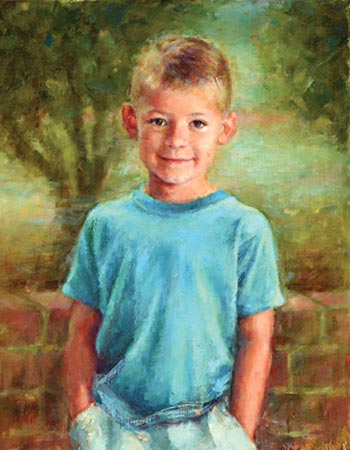Subtotal: $
Checkout-

Insight: Friedrich Froebel
-

The Technology of Gender
-

Digging Deeper: Issue 15
-

The Gods of Progress
-

Anabaptist Technology
-

Your Neighbor Lives Next Door
-

Insight: Why I Am Not Going to Buy a Computer
-

The Perfect Tool
-

Endangered Habitat
-

The Pen and the Keyboard
-

Meet a True Story
-

A poem for my son about grace
-

Editors’ Picks Issue 15
-

The Soul of Work
-

Go On, Inner Man
-

Viktor Frankl
-

The Joys of Tech Asceticism
-

Readers Respond: Issue 15
-

Family and Friends
-

How to Homestead a Hermitage
-

Awake the Harp
-

The Ministry of Reconciliation
-

The Immortality Machine
-

The Immortality Delusion
-

Simulating Religion
-

Insight: Finding Someone to Worship
-

The Pencil Box

Why Children Need White Space
By Johann Christoph Arnold
February 16, 2018
Available languages: العربية
Children of the twenty-first century can navigate distant worlds from their video game controllers, but are often not equipped with an understanding of the real world outside the window. Fascinating entertainment options have them hooked almost as soon as they can focus their eyes. As parents and teachers, we know that too much technology is bad for children. And we’ve all heard horror stories about cyberbullying, easily accessible porn sites, and online sexual predators. Parents can try to put controls on what their children can see and limit their access time. But what if the technology itself turns out to be bad for childhood?
Rhonda Gillespie is an infant and toddler specialist who has worked in early childhood education for decades. When I asked her what she thought about technology and children, she shared her own story:
“I have seen a devastating impact on children over the last twenty years. Technology attacks the foundation necessary for healthy development. When I was a child, our neighborhood was safe and I played outside every day with my friends. We used our creativity and imagination, enhanced our problem solving skills, and developed healthy bodies. But by the time my son was growing up, I rarely saw neighborhood children playing outside. The trend had shifted, and the outdoors was perceived to be unsafe.
Just as books require white space, so do children.
“I had to return to work full time, which meant long days and less evening time to play and enjoy the outdoors with my son. The biggest mistake I made was purchasing him his first video game console. It started off with rules and time limits, but as time progressed, so did the hours at the game controller.

Stephen Scott Young, Little Cindy
Image from Stephen Scott Young
“At the beginning, it seemed like a win-win: he was interacting with children from all over the world and could casually socialize with his age group. He became good at some games and his confidence rose. I always thought that at some point he would find friends to play with in the neighborhood. Socialization has always been a challenge for him, and video game companies often bill their products as a bridge to forming connections. Now I feel he was denied the chance to develop healthy interactions.
“My son is seventeen years old now. He will text all day long. He says he is comfortable talking to people on the computer because he does not get bullied. But the flip side is that he did not learn to work through those awkward childhood moments that are an opportunity for growth. If he had never had the choice of online ‘friends,’ would he have learned better social skills?”
We know that physical health is affected by screen time – especially eyesight, hearing, and weight. But we also need to consider how it attacks a child’s soul. Many children find themselves unable to communicate with a real person who requires a thoughtful verbal response. More and more young children arrive at preschool with speech difficulties; some do not speak at all. Since this is a diagnosable trait in the autism spectrum, how many children may be categorized as autistic when they have simply not had the opportunity to learn human interaction?

Suellen McCrary, Gavin
Reproduced by permission from Suellen McCrary
In my conflict resolution work in schools, I sometimes speak with teens who don’t know who they are – what is real about themselves and what is a mask. They have spent their growing years using several different personas or avatars in various imaginary worlds, and if they can make these false fronts more glamorous and bold than any mere human can hope to be, we should not be surprised that they come to hate themselves. This leads to desperation, depression, and in all too many cases, suicide.
There is no easy way to relieve the burden that technology places on children. But if we love them, we can’t slip into resignation just because we don’t know where to start. One way to take action is to give children more “white space.” In a book, white space is the room between the lines of type, the margins, the extra space at the beginning of a chapter. It allows the type to “breathe” and gives the eye a place to rest. White space is not something you’re conscious of when you read a book. It is what isn’t there. But if it were gone, you’d notice it right away. It is the key to a well-designed page.
Just as books require white space, so do children. They need room to grow, in a space shielded from the onslaught of the information age. It does not take a brilliant mind to see the effects of a lack of white space. When children are overwhelmed by entertainment, material goods, high-pressure academics, and frequently unstable home life, it’s as if their flashlight batteries are being run down. Their light gets dimmer, and they don’t know what’s wrong. If we deny them the time, space, and flexibility they need to develop at their own pace, they will not be able to recharge their batteries.
Hours spent alone in quiet provide a necessary lull in the rhythm of the day.
The ancient Chinese philosopher Lao Tzu reminds us that “it is not the clay the potter throws that gives the jar its usefulness, but the space within.” If stimulation and guidance are the clay, then time by oneself is the space within. Hours spent alone in daydreams or in quiet, unstructured activities – preferably out in nature – instill a sense of security and independence and provide a necessary lull in the rhythm of the day. Children thrive on silence. Without external distractions, they will often become so inspired by what they are doing that they will be totally oblivious of everything around them. Unfortunately, silence is such a luxury that they are rarely allowed the opportunity for such undisturbed concentration.

Kay Polk, Sunny
Image from Kay Polk
As parents and caregivers, how can we find creative ways to give children more silence and space? In schools, some teachers stand at the classroom door with a bag, confiscating all phones and tablets for the duration of the class so that children can focus. Others send home letters to parents requesting less entertainment time after school hours. They point out that children are more likely to get their homework done and have a good night’s sleep.
In Los Altos, California, children of Google, Apple, and Hewlett-Packard executives attend a Waldorf School that doesn’t use computers in the classroom. If executives in the world of high technology choose a school that protects their children from computers, other parents and teachers need to hear about it. But even if schools are unwilling to scrap their much-bragged-about technology, there are outdoor programs that can do wonders for a child’s confidence. Sometimes, all children need is a chance to find out for themselves that the real world is more interesting than the virtual world.
White space and nature can be healing for troubled children. But, like most remedies, they work better if taken preventatively. We can proactively make changes before things get desperate. Can you do without a television? Thousands of families do, with heartening results. Having grown up without one, I found it easier to leave it out of my own home, sparing our children the advertising that would relentlessly inform them, among other things, of further advanced technology that they “just had to have.”
If several nearby families opt for freedom from screens, it can become a groundswell movement. Children can play together and adults won’t feel as if they’re the only ones out of step with the times.

Kiéra Malone, Soyab
Image from Kiéra Malone
In my house, as in many, computers are merely tools for adults to do their work; we don’t turn to them for entertainment. My kids only learned typing in middle school, when their term papers were long enough to warrant the effort. Parents can support their children’s research, teaming up for internet searches if they’re required, but also taking library trips together and swapping books. It’s a great chance to point out that anyone can say anything online, but that doesn’t mean it’s true.
World news should be a part of a child’s education, but it does not need to be accompanied by graphic images. It is hard enough for us adults to process the pain and suffering we see in the news each day without becoming jaded or allowing it to harden our hearts. If adults take the time to read up on current events or listen to public radio, we can approach difficult subjects in a way that respects a child’s age and understanding. This can provide an opening for further discussion about world suffering and what can be done to alleviate it.
Let’s tune in to the living, breathing wonders who are waiting for us to look up and notice them.
The catch, of course, is our own time. In our over-scheduled adult lives, we’re not sure we have time to work and play together with our kids, or sit and talk about the news. But when we think of the alternatives, it is worth making time, and making it now. We only have these few years together. Society may lament an epidemic of lost, cynical teens, incapable of compassion or empathy. But if children’s spirits aren’t guided and protected by those closest to them, what do we expect?
It’s time for us to take a hard look at all the clever devices in our own lives that everyone calls timesavers. When we sit texting on a playground bench while our kids play alone, whose time are we saving? When we send one more tweet, read one more article, play one more round of a video game while children are in the vicinity, we’re telling them that something else is more important than they are. We can talk about children’s technological addictions all we want, but the problem starts closer to home.
Let’s put our machines away and tune in to the living, breathing wonders who are waiting for us to notice them. Let’s shut off the power, take our child by the hand, and show him that the real world is a fascinating place.
This article was excerpted from Johann Christoph Arnold’s book Their Name Is Today (Plough, 2014).

Already a subscriber? Sign in
Try 3 months of unlimited access. Start your FREE TRIAL today. Cancel anytime.






































Pat Durmon
Wow! She hits the nail on the head. I salute her for this article. Loving the term white space as needed by children. We all need it. I am borrowing her term. : )
METİN ERDEM
We need to teach our children the peace,love,faith,mercy and forgiveness and so they need to know that cell phones and computers are for getting information and communication only. And we should follow them which friends and sites he or she visits. All family , parents, grand parents ,aunts , uncles should act same. Children need to open white page in their life. They need to learn the world and God otherwise they kill each other as it was in Florida last week. A lone child kill 17 class mates ? Shocking attacks and victims. May God help us to learn to forgive and live in peace and brotherhood.
Colleen G
Heidi- Its odd when I see the phrase "white space" I think of an empty dry erase board and not skin color. Perhaps we have been trained to be overly triggered by ordinary words. When a word or phrase is so tainted in our minds that we cannot see/hear it without assuming ill intentions it might be time to step back and ask deeply- "Is there a problem with this word/phrase in how it is being used or have we been trained to see demons of hate in every bush?" Sometimes the snow is just white because it is white not because it has micro-aggression issues. White space would just be a blank void instead of hidden code meaning other colors are less-than. When white becomes just another color in the box instead of an attack maybe all children will experience more peace with their world.
Heidi Eastman
The article by Johann Christoph Arnold (Why Children Need White Space, Winter 2018) caught my attention, with its beautiful visual portraits of children, and addressing a subject dear to my heart: the need to provide our young people with ample opportunities for time without screens and schedules, time that allows for wonder. I do fear, however, that by naming this article “Why Children Need White Space” it will appear unconsciously detrimental to some readers, as it did to me. Even now, many “spaces” in our culture could be called “white” in that they - our schools, our judicial system, and our governing bodies, to name a few - are largely designed by and for those whose skin is less pigmented. Children of every color have spent plenty of time living in this kind of “white space” without finding the nourishment they need. In the book from which the article was excerpted (Their Name is Today: Reclaiming Childhood in a Hostile World) the chapter was called “Screening Out”. That name presented no such barrier to this reader. The truth is, our children need dark space, too. For example, they need - as we adults also do - the velvet blackness of the night sky, from which the stars gain their ability to twinkle, and to which our human hearts respond with awe. Humans have “read” the wonder of God’s creation in the night sky for millennia. The Heavens are indeed telling us the glory of God. As Arnold so beautifully described, we want all our children to receive these kinds of blessings.